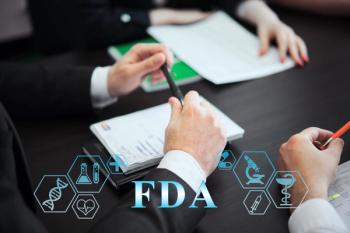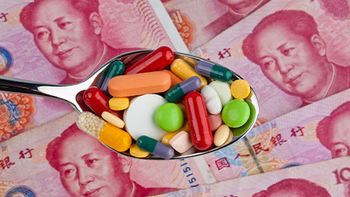
Trending: Shire's Valley of the Dolls
Thanks to Shire's star drug Vyvanse, if you don't know much about binge-eating disorder, you soon will, writes Marylyn Donahue.
During a recent dinner with my women friends, I mentioned that a drug, Vyvanse, was being marketed for binge eating. Given the response, I might as well have said George Clooney and his new wife Amal Alamuddin just had entered the restaurant. They couldn't have been more excited. Irresistible to them was the prospect of being able to take a drug that could help shed the extra ten pounds that seemed to be the bane of all their existences. None of my friends, I might add, were over weight. But then a binge eating disorder or BED isn't about being over weight, or even weight at all. And while none of the women knew exactly what a binge eating disorder was, all of them figured they must have it, recalling the whole pints of rocky road ice cream consumed on occasion when stressed or from sheer boredom. But that wasn't the definition of BED either. No matter, all of them wanted to try the drug. "It kills appetite, right? So what's not to like?"
"Well, for one thing it's an amphetamine and addictive," I replied.
"Oh no," moaned one of the women. "Valley of the Dollas all over again, eh?" She was remembering Jacqueline Susann's 1966 best-selling novel (later made into a movie). The dolls in the title referred to the amphetamines popped as diet pills by the rich and famous women Hollywood characters, who soon became addicted to the stimulants and tranquillizers and sleeping pills (also addictive) used to come down off the speed. Susann likened the pills to the dolls children clung to for comfort.
At the time Dex (short for Dexedrine and amphetamines) were not only popular with the rich and famous, however. In the fifties and early sixties they were part of the culture that lauded women as the perfect housewives. Deemed "mother's little helpers" suburban wives popped them for extra energy, and to help stay slim while they nibbled on Spartan diets of Melba toast and cottage cheese. And the pills worked until they didn't. And the term nervous breakdown entered into popular parlance to describe what happened and the extreme mental suffering that ensued when tried to stop the addiction and come off the pills.
Whether or not my friends were deterred from asking their doctors about Vyvanse, I don't know. What I do know is given the baggage such words as eating and binge carry for women in particular, it looks as if Shire has a double winner on its hands with Vyvanse. Whether or not a patient qualifies for having BED, the condition is nebulous enough that the chance of it being prescribed off label could be high.
Already Vyvanse is Shire's star drug. Approved for the treatment of ADHD in adults and children in 2007, it pulls in nearly 1.5 billion in sales annually. A form of amphetamine it resembles Shire's sister drug Adderall also indicated for the treatment ADHD (at the time Vyvanse entered the market, however, Adderall, was on the verge of going off patent).
Shire received approval for Vyvance to treat binge eating in January 2015 and immediately set about launching an aggressive marketing campaign to put the disorder on the medical map. And if my friends didn't quite know what binge eating was, they soon will. Deemed a disorder by the American Psychiatric Association in 2013, binge eating was seen by doctors prior as a possible aspect, or shadow condition for the far more serious eating disorders-anorexia and bulimia.
As described in the DSM-5®, binge eating episodes are associated with three (or more) of the following: eating extremely fast, eating beyond feeling full, eating large amounts of food when not hungry, eating alone to hide how much one is eating, and feeling bad about oneself after a binge. Unlike people with other eating disorders, people with BED don’t routinely try to “undo” their excessive eating with extreme actions like purging and over-exercising. BED is not part of another eating disorder. All of the criteria defined in DSM-5® must be met in order to make a diagnosis of BED by a health care provider.
Currently BED is on its way to acquiring celebrity status due to a star turn by retired tennis great Monica Seles who has been making the round of talks show along with a recent interview in People and the publication of her own book "Getting a Grip: On My Body, My Mind, My Self."
“I felt ashamed about my binge eating for so long, and my hope is that hearing the stories of people like me, and having information about the disorder more publicly available, may help inspire other adults to get the support they need," she said.
Seles's forthcomingness is not entirely altruistic. Shire hired ADD Sales to be the BED spokeswoman for an undisclosed amount of money. "Shire announced today [Febuary 3] its partnership with the
The disorder and not the drug is an important distinction. Marketing the disorder first without any mention of the treatment is not an unusual strategy for a direct-to-consumer pharmaceutical marketing campaign, especially if the condition is little-known but has the potential for being of interest to a large number of people. Typically it includes a nonbranded website with education about the disease, public service announcements, partnering with a patient association, celebrity spokespeople and the like. Unbranded disease/disorder-marketing has proved particularly successful strategy for Shire who first marketed
Recently, however, its the drug-Vyvanse- and not so much the condition that's causing concern. According to
So why was the drug approval so quickly given? Certainly not because of Shire's marketing track record. From The Times: "In 2011, the FDA
for misleading advertising, and last fall the
Newsletter
Lead with insight with the Pharmaceutical Executive newsletter, featuring strategic analysis, leadership trends, and market intelligence for biopharma decision-makers.





